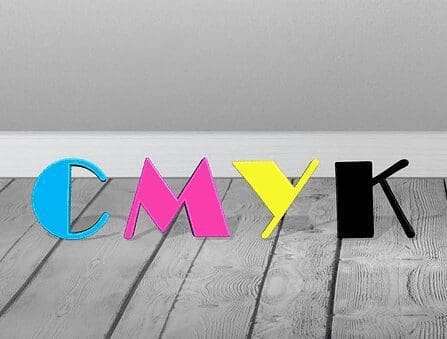In the world of professional and commercial printing, CMYK is still pretty dominant. It’s named after the four colors used to create all other colors. The fact that it remains so widely used in the professional world goes to show just how useful it can be and how it can be very beneficial in many situations, despite there being competition from RGB and Pantone. We’re now going to explain in more depth what the CMYK model really is and what you should know about it.

What Does CMYK Stand For?
CMYK stands for the four colors used in this color model: cyan, magenta, yellow and black. It’s commonly used in commercial settings for printing high-quality images. The different colors combine, and they’re then subtracted to create colors that are required for the printing job at hand. The RGB color model is similar to the CMYK model, but they are not the same. When printing the same image using these two different models, the human eye can spot differences.
What Makes it Subtractive?
The model is subtractive because colors are taken away to create new ones. This is the opposite of the RGB color model because that model is additive, meaning colors are combined in various ways to create new colors. Subtractive essentially means that the model starts with white and ends in black, and with additive color models, we start with black and end with white as new colors are added. That’s a simple way or remember how all of this works in practice.
The Benefits of CMYK When Designing for Print
One of the main benefits of CMYK is that it’s very good for printing photographs, and that’s not so much the case with RGB. It’s very good at recreating the nature of photos, and the gradients on printed images are very strong as well. These are among the main reasons why it’s so commonly used in commercial scenarios. If there are lots of colors going on at the same time on a printed page, it also tends to be best to use CMYK because it can cope well with that without losing quality.
Printing in CMYK
If you have designed something on a computer using a program that uses RGB by default, you will need to make sure that these images are converted before you print them in CMYK. As we’ve already highlighted, RGB and CMYK are very similar but the outcomes are different. Blues and purples tend to display the most notable differences. So if you design using a different color model and you don’t convert, you will end up with a printed image that looks slightly different from what you designed on the screen.
It’s often the case that professional printing services will focus on CMYK, and this is the case for a variety of reasons. It’s seen as a little more precise and flexible than RGB, but there are certain programs that will limit what you can achieve in CMYK. InDesign and Adobe Illustrator, however, are optimized for designing and printing in this color format.






